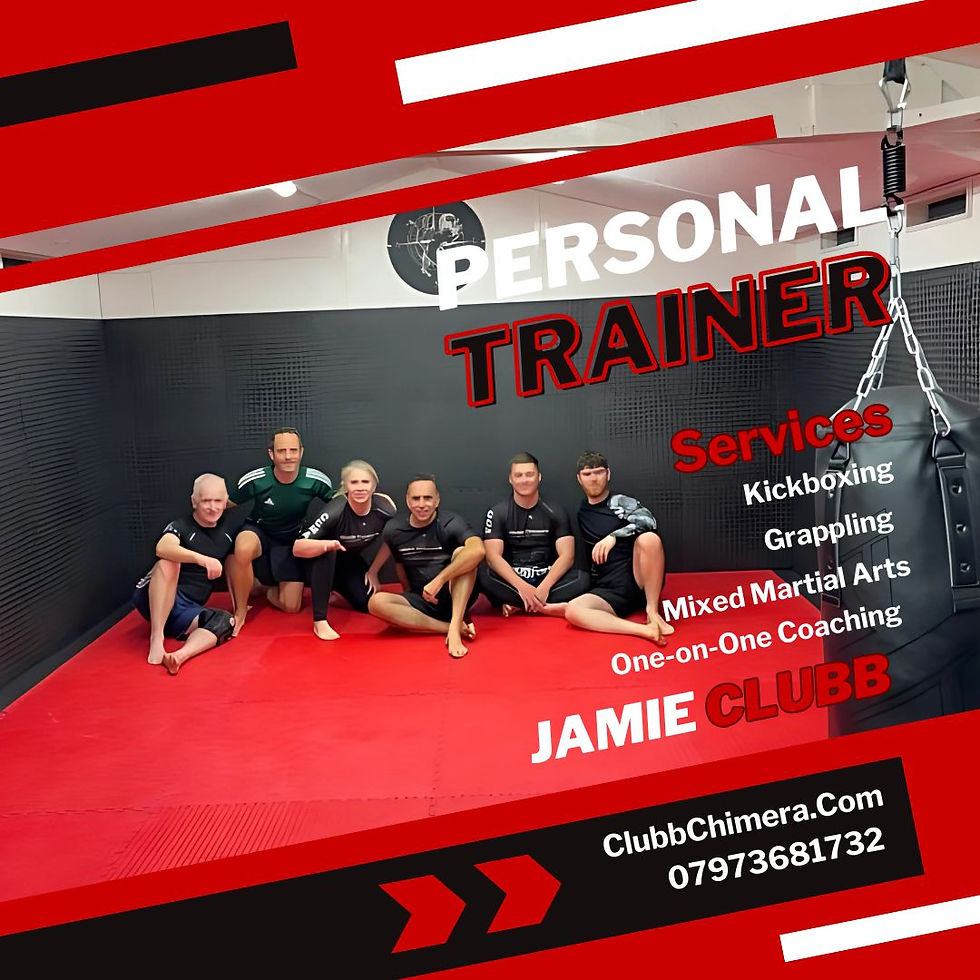Foundation Conditioning Introduction
- jamie03066
- Jun 15, 2015
- 3 min read
“There's no such thing as tough. There's trained and untrained. Which one are you?” – Denzel Washington as John Creasy in Man on Fire
When I interviewed Straight Blast Gym UK representative Karl Tanswell back in 2006 about his views on martial arts I posed the question “What is the most neglected part of martial arts training?” This was part of a general a questionnaire I used to research an intentionally polemic book on the truth about the history and subculture of martial arts. Karl’s answer was different to just about every other self-defence pioneer I had interviewed. Most answered that pressure testing or soft skills were lacking in schools that purported to teach self-protection. Karl’s answer was “Conditioning”.
It was an interesting argument and not one without merit. Being conditioned allows your body to be able to handle the stress of combat whether you are fighting for a prize or for your life. Soft skills are the most important aspect of self-protection, but I believe the cornerstone of these non-physical skills is attitude. And one of the best ways to develop attitude is to act in a positive way. I don’t mean the pseudoscientific “positive thinking” that is rarely away from gyms these days thanks to the cult of self-help. What I mean is taking action. Physical exercise or training is a way to push action to its extreme. We build tenacity and confidence by increasing the scope of our body’s ability. For want of a better word, we build “fighting spirit”.
These articles look at the “bare bones” of good honest functional training. If you are in training for the long haul rather than just wishing to learn self-protection as you would do a First Aid course, then this is the article for you. I have written a fair amount of the virtues of functional fitness and am a strong supporter of specific training. Please see my article “The Hierarchy of Training” and its sequels, “Specific Training”, “Attribute Training”, “Functional Fitness”, “The By-Product Myth” and “The Calypso Effect” for more on my views on prioritizing on training methods that have a direct relevance to your chosen objective. However, it has dawned on me, as it has on many other proponents of functional fitness for martial arts, that perhaps many base elements are being missed in the race to mimic fighting conditions.
As my private student clientele has grown I have been asked time and again for set routines. I am loathed to offer these, as I feel they are only temporary measures. Students will follow them and then keep coming back for more without properly understanding what is being learned. As with everything in my coaching, I want to develop thinkers. I see my role as a coach is to help those who train with me to develop their own internal compasses as opposed to giving them copious numbers of maps or directions. Having said that, I do appreciate that people need examples to help them on their own personal journey and it can be something of an unrealistic assumption to just expecting people to work out their own training methods just because they know what they want to achieve.
Furthermore, if we take into account the endless amount of training programmes out there and the various training fads being aggressively marketed, it is also a bit of a tall order to expect a novice to stick on the straight and narrow without getting drawn into what is screaming for their attention.
This series of articles are designed to cut away the hype, the empty promises and the anecdotal evidence to get back to the fundamentals of building your body for physical combat. I take into account that different people have different inherent strengths and weaknesses, but there are certain basic elements that should be in place to develop a well-rounded approach to training. These elements help shape the way we look at techniques. The martial arts world is often bogged down with idosyncratic and stylistic ideas about technique that teachers regularly fail to look at basic principles behind body structure, biomechanics and the physics of motion. Many of these basic exercises, which have stood the test of regular and well-funded research, provide us with a good idea of how best to stand and move. Obviously under the pressure of combat and the demands of the environment these structures are susceptible to change, but at least we have a firm foundation to start.













Comments